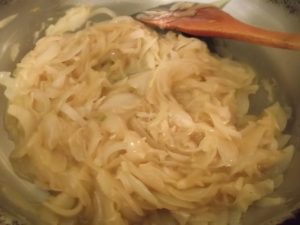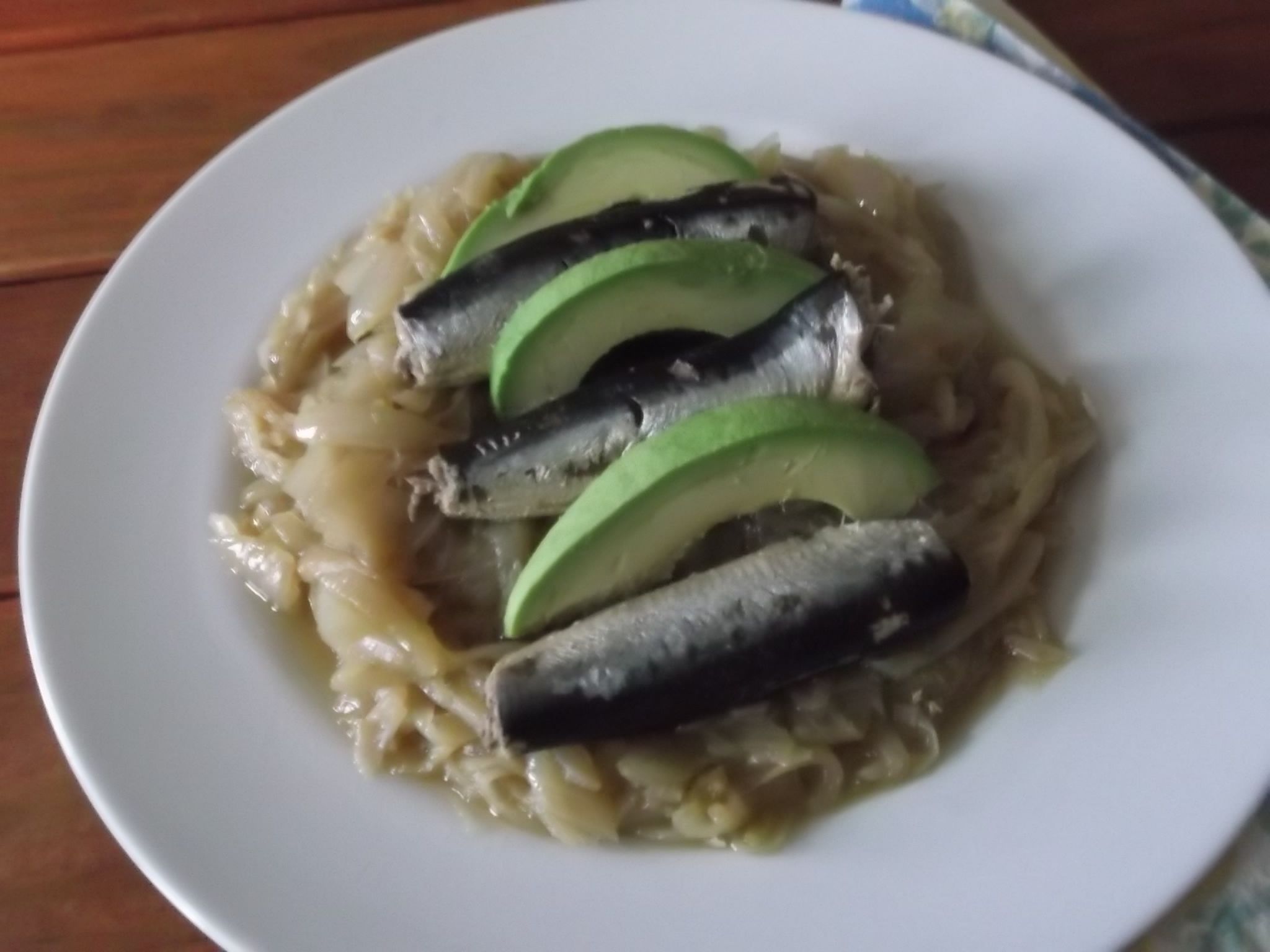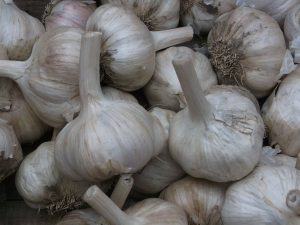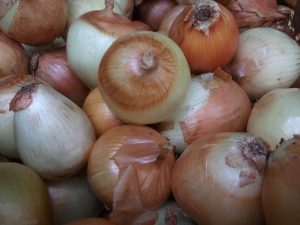On more than a few occasions this spring, my husband Christopher has walked through the door and asked, with raised brow: “You’re cooking onions?? Again?!” Other times, he has made a point to let me know: “Whew! You reek of garlic!” Hmmph! Not exactly verbal foreplay…!
But even for my husband, I was not about to give up my big stinky love.
As lovely as Spring can be, it is the season when I’m most vulnerable to getting sick—thanks to flowering buds, tree pollen and wildly fluctuating temperatures, where you can be wearing flip flops one day, and bundled in a heavy coat the next. Especially in New York.
It’s also the time of year when I have intense cravings for garlic and onions—part of the diverse aromatic Allium family that also includes scallions, shallots, chives, ramps, a.k.a. “wild leeks” and milder-tasting domesticated leeks. (Luckily, in early spring, I was able to find plenty of onions and garlic at our small but trusty year-round farmers’ market.)
Behind every craving, there’s a reason. Mine was all about sulfur.
While its smell is rarely subtle, sulfur is an important mineral. It plays a role in many biological processes—including metabolism.
Organosulfur compounds, specifically, allyl sulfides, give allium vegetables their pungent “stink” and bite. Studies have shown that those same odoriferous allyl sulfides (and bioflavonoids) in onions and garlic can have health-promoting benefits. Eating allium regularly can help stimulate the immune system; suppress inflammation; eliminate toxins; boost antioxidant levels, and protect against stomach and colon cancers.
Smart body! In its infinite wisdom, my body had guided me toward—no, demanded!—immunity-boosting and detoxifying foods.
Of the two, garlic usually gets all the glory. It has antibacterial, antiviral, antifungal, anti-parasitic and anti-cancer properties: studies suggest that garlic bolsters the immune system. In fact, during World War I, garlic was used as an antibiotic; researchers later discovered that the allyl sulfide in garlic exerts an antibiotic effect. Garlic also contains allicin, which, in large quantities (we’re talking 7 to 28 garlic cloves daily!), confers cardiovascular benefits, including a potentially positive effect on blood cholesterol.
You get the most benefit eating raw garlic. Why? Because crushing, slicing or mincing raw garlic is necessary to release alliinase, an enzyme that forms the sulfur compound allicin, which then breaks down into various beneficial organosulfur compounds. These days, I get my daily dose of raw garlic—3 to 5 cloves—in my savory spinach smoothie.
Studies show that, unfortunately, heating garlic can destroy alliinase enzyme activity, causing garlic to lose its therapeutic benefits, either partially or entirely. Since nobody enjoys eating raw garlic all the time, the best way to preserve alliinase enzyme activity is to let crushed or sliced garlic stand for at least 10 minutes before cooking. The longer garlic “rests”, the more allyl sulfur compounds are released, enabling garlic to better withstand high-heat cooking and to retain its therapeutic properties.
Onions, too, are rich in sulfur and an excellent source of polyphenols. They are also abundant in flavonoids, including quercetin, which can help fight infection by rallying responses to bacteria and viruses. Quercetin helps reduce inflammation by preventing the oxidation of fatty acids in the body;
Consumption of quercetin-rich foods or quercetin supplements can help block allergic responses—welcome news for allergy sufferers like me! Eating onions several times a week may also have a protective effect against colorectal, ovarian and laryngeal cancers.
For maximum nutritional benefit, eat allium vegetables raw. But while I love—actually, crave!—raw garlic in my morning green smoothie, I prefer eating onions cooked—not raw. I just let them stand at least 10 minutes before cooking.
Over the last few year, I’ve transitioned to a mostly Paleo diet. Even now, however, I’ll get out-of-the-blue cravings for something starchy—like bread or noodles—or something sweet (say, a ginormous chocolate chip cookie). What saves me from indulging my baser sweet tooth instinct? One humble dish: sautéed onions! Simple to make. Sweet-tasting. Delicious. Filling.

Yellow onions are my go-to onion. I eat them several times a week—breakfast, lunch, dinner, or as a sweet snack.
Here’s one of my favorite “fast food” breakfasts:
Caramelized Onions with Sardines and Avocado
Caramelized onions are golden brown, naturally sweet—and delicious. Sure, you can do a quick 10-minute version of sautéed onions. But, for that silky sweet texture, I prefer to slow-cook onions for 30 minutes.
- 5 to 6 medium yellow onions, halved lengthwise, ends trimmed, and sliced thin
- 2 tablespoons coconut oil or pastured butter
- 1/4 cup homemade chicken stock
- 1 tin of Wild Planet sardines (packed in water)
- 3 thick slices of avocado
In a large skillet or Dutch oven, heat coconut oil (or butter) over medium-low heat. When the oil begins to sizzle (not smoke!), add the onions. Sauté until onions have wilted, about 2 minutes. Reduce heat to low and cook another 8 minutes or so. When onions begin to stick to the pan, add chicken stock, stirring well. Cover and continue cooking over low heat about 15-17 minutes, stirring occasionally and adding more stock when onions stick. Uncover.
Continue cooking until the stock has evaporated, and the onions are golden brown and tender.
Transfer the cooked onions to a plate. Arrange the sardines on top, alternating with avocado slices.
Sources:
Fortin, Francois (Editorial Director). The Visual Food Encyclopedia. Macmillan; 1996.




